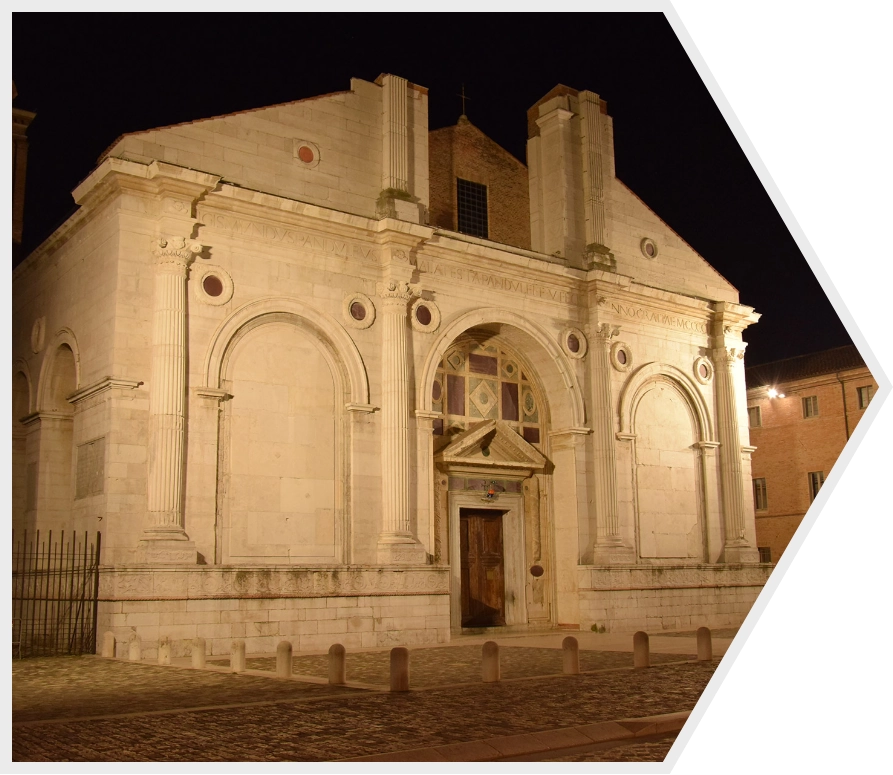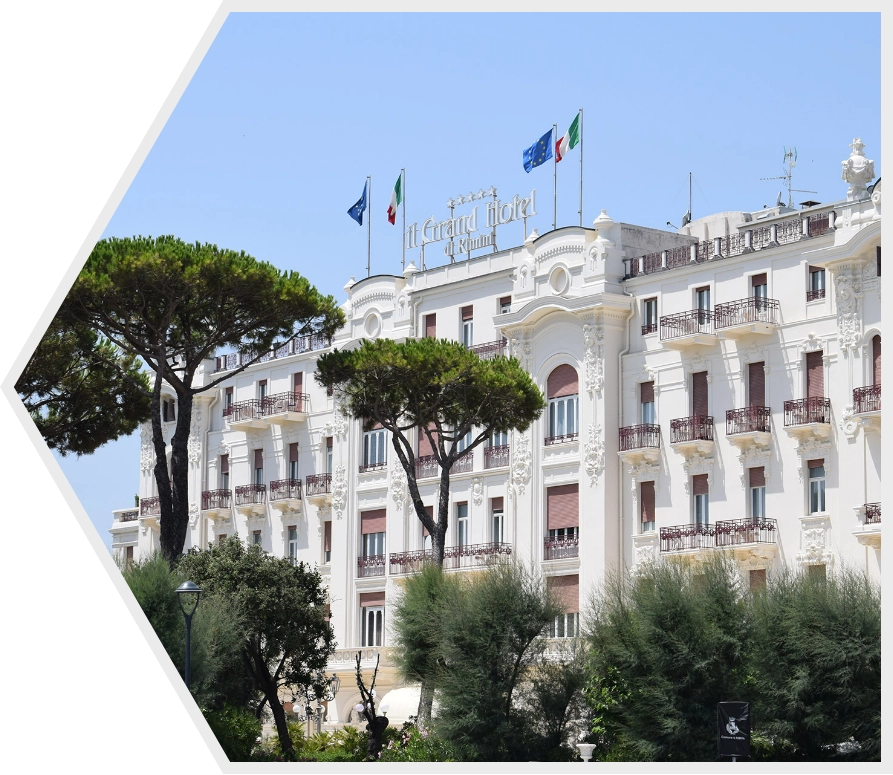
A blue expanse of sea and 15 kilometers of beach: from the sea, this is the calling card of Rimini, the city that more than any other in Italy represents the culture of hospitality. Here, every day is a celebration with hundreds of sports, cultural events, concerts, and initiatives that embrace tradition, gastronomy, and a passion for the seaside.
Rimini, formerly known as “Ariminum,” is a city with over 2,000 years of history. The Arch of Augustus, the Tiberius Bridge, Castel Sismondo, the Malatesta Temple, and the City Museum are just a few of the recommended stops for those who want to discover the city’s artistic treasures.
A few kilometers away, another world unfolds: the Lordship of the Malatesta, a splendid hinterland with a landscape of hills, spurs, and castles perched on hilltops. It’s impossible not to fall in love with it at first sight.
Rimini was founded by the Romans in 268 BC with the name Ariminum, and in 27 BC, with the establishment of the colony Augusta Ariminensis, the Arch of Augustus, an ancient monumental gate of the city, was built. The other entrance, the Tiberius Bridge, was constructed between 14 and 21 AD. In 1295, the Malatesta family from Verucchio took power, inaugurating the rule of the Malatesta dynasty. In 1432, power was transferred to Sigismondo Malatesta, who was responsible for the construction of Castel Sismondo and the Malatesta Temple. In 1815, Joachim Murat, with the “Proclamation of Rimini,” urged the people of Rimini to achieve independence from Austria.
Rimini was founded by the Romans in 268 BC as Ariminum. It was later transformed into a tourist destination with the opening of the Grand Hotel in 1908, making it an elite tourist spot. However, the tourism industry was disrupted by two world wars, with the second war causing significant destruction to the city in 1944. Rimini was then rebuilt in the 1950s, rising from the ruins of the post-World War II era, and it became a hub for mass tourism.
Today, the city of Rimini is brimming with optimism and enthusiasm. It is often referred to as the “Miami of Europe” and is considered the capital of hospitality and entertainment. Rimini is among the few cities in the world that heavily invests in tourism, offering its visitors excellence in infrastructure, beach activities, tourist attractions, and a wide range of gastronomic options, making it one of the most sought-after destinations in the Mediterranean.



Located in the city center, Cavour Square has always been the seat of political power in Rimini. One side is lined with the facades of Palazzo dell’Arengo, Palazzo Garampi (currently the town hall), and Palazzo del Podestà, while the other side is occupied by the Galli Theater, inaugurated in 1857 by Giuseppe Verdi.
In the center of the square stands the Fountain of the Pine Cone, admired and mentioned by Leonardo da Vinci on August 8, 1502. It was renovated in 1543, and originally, there was a statue of Saint Paul on top, which has since been replaced by the symbol of the pine cone.


The Grand Hotel Rimini is a historic luxury hotel in Rimini, Italy. It was designated a national monument in 1984 and is located in the Federico Fellini Park. After being declared a national monument in 1984, ten years later, in 1994, the Grand Hotel Rimini was further designated a national monument under the supervision of the Fine Arts Authority. Adding to its fame, the Rimini-born Federico Fellini prominently featured the Grand Hotel in his film “Amarcord,” using it as a setting for many scenes.


The fortress residence of Sigismondo Pandolfo Malatesta, the Lord of Rimini from 1432 to 1468. Sigismondo began its construction on March 20, 1437. The castle was conceived as both a palace and a fortress, serving as a fitting residence for the court and a symbol of power and supremacy over the city. Now, the Castel Sismondo complex in Piazza Malatesta consists of four interconnected parts: the Isotta Palace, with three interconnected floors; the central service building, with two floors; the large courtyard, of significant size; and the Maschio, which is the central and most striking part of the entire complex, with two floors connected by a spiral staircase located in the main tower.
Il Marina
Resort
Shipyard
Services
Activities
News ed Events
Visita Rimini
Contacts
Privacy Policy
Cookie Policy
Condizioni d’uso del sito
Diving Center – 24-hour Surveillance
Charter for Boats
Mooring Assistance
Transfer Service – Hotels on the Marina
Bar – Restaurant – Tobacco Shop – Newsstand
Internet and Fax Access
Medical Care – Commercial Area
Fitness Center and Baby Park
Dry Cleaning – Laundry
Repair and Installation
Mechanical Services – Hauling and Various Services
Hull Cleaning
Antifouling
Marine Canvasworks
Maintenance and Cleaning
New and Used Assistance in Water and Yard Sales
International Sea Transfers
Point for Sales in Judicial Boat Auctions
Services
Diving Center – 24-hour Surveillance
Charter for Boats
Mooring Assistance
Transfer Service – Hotels on the Marina
Bar – Restaurant – Tobacco Shop – Newsstand
Internet and Fax Access
Medical Care – Commercial Area
Fitness Center and Baby Park
Dry Cleaning – Laundry
Repair and Installation
Mechanical Services – Hauling and Various Services
Hull Cleaning
Antifouling
Marine Canvasworks
Maintenance and Cleaning
New and Used Assistance in Water and Yard Sales
International Sea Transfers
Point for Sales in Judicial Boat Auctions
Marina Blu S.p.A. | P.iva 03265950406 | Capitale sociale i.v. € 729.020 | REA Rimini n.284684 | Web-Agency: ExcellentMarketing
Marina Blu S.p.A.
P.iva 03265950406
Capitale sociale i.v. € 729.020
REA Rimini n.284684
Web-Agency: ExcellentMarketing